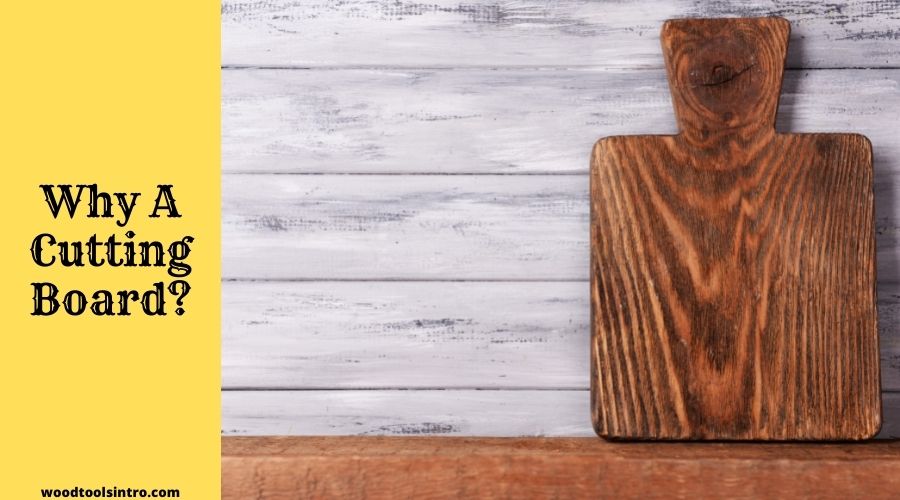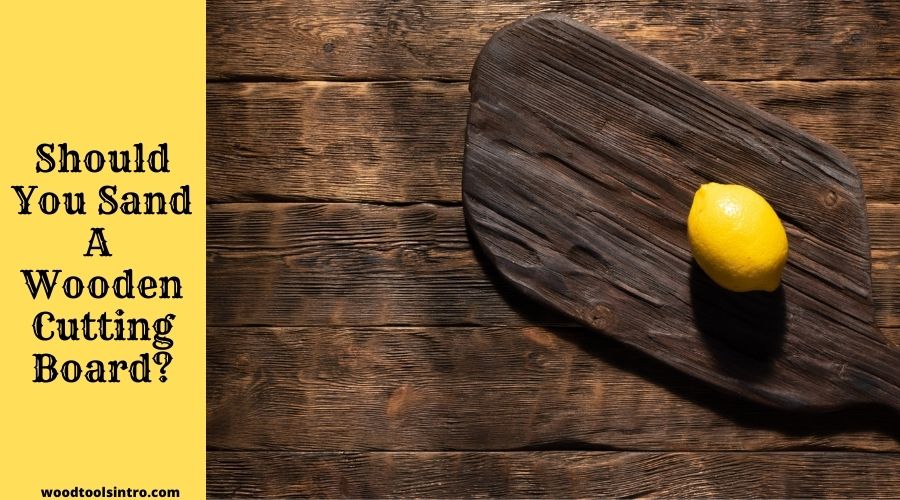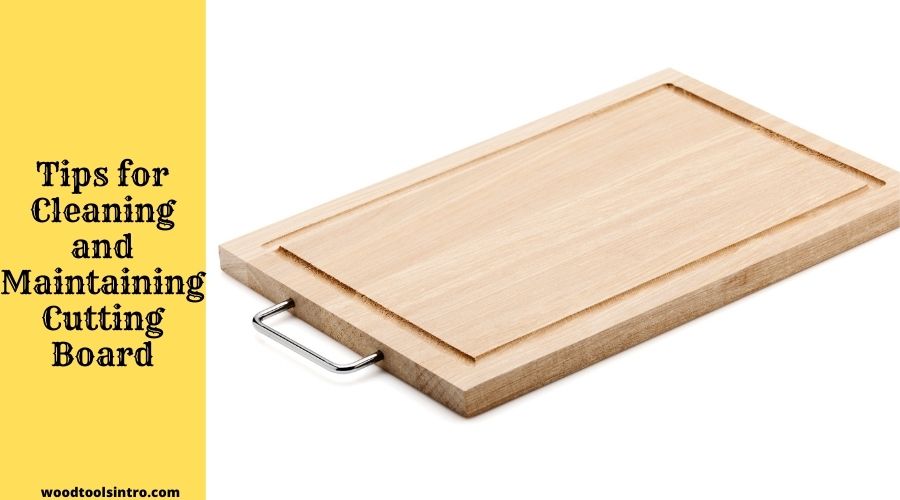Does the surface of your wooden cutting board become marred? If it is not heavily damaged, you can sand its surface to eliminate the scratches or gouges.
Sanding a cutting board Periodically can help you retain cutting board’s decent working condition. Obviously there come a question “Can you sand a cutting board?” If so then how to do that?
Let’s answer all the questions regarding sanding a cutting board in depth.
Also check
Why A Cutting Board?
A cutting board or chopping is a flat, smooth wood or plastic surface where you keep raw food items for chopping, slicing, and cutting. There is support at the back of the board. It prevents unwanted slippery issues and accidents.

It is a handy kitchen tool that makes the cutting and chopping process easier and faster. Moreover, it works as a protective surface to prevent meats and vegetables from touching the kitchen counter surface. This ensures a better hygiene condition.
Should You Sand A Wooden Cutting Board?
Now it’s time to answer can you sand a cutting board.
And the answer is yes, you can sand any wooden cutting board if it has become excessively marred.
But if you have recently purchased it, periodical sanding is a good practice to remove hard oils and grease from the board surface.

Sanding a wooden cutting board will help you eliminate all the cut marks and stains on the board. Your sanding frequency will depend on how heavily you use the cutting.
Keeping the surface clean and fresh will help you enjoy a better cutting and chopping experience.
How Do You Sand and Refinish A Cutting Board?
Wondering how to sand and refinish a cutting board?
First let’s find out what you need to sand cutting board
- A quality light sander
- White vinegar or dilute chlorine bleach
- A dryer (if necessary)
- 80 or 120 grit sandpaper
- 200-800 grit sandpaper in case of excessive scratches
- Rejuvenation oil
Here is the simple step-by-step method to follow to give your cutting board a beautiful shine again.
1. Washing the Cutting Board Surface
At first, you need to let the wooden cutting board wash and clean properly. Make sure to remove all oil and grease residues
You may need to wash it several times if you have not washed it for several days. You can use white vinegar or dilute chlorine bleach solution to clean the board surface.
Make the cutting board fully dry. It is better if you let it dry overnight. All water droplets should be removed from the surface.
2. Sanding the Cutting Board Surface
The next task is sanding the wooden surface. It will be best if you can manage a good quality random sander. However, manual sanding is not a bad option at all.
You can start the sanding process with an 80 or 120-grit. Beginning with a powerful sanding block will make the job easier. Make sure you don’t use them across an area of the sanding paper.
Instead, use the grain portion to sand the wood surface. Using the across will add more scratches on the cutting board.
3. Removing Sawdust from the Cutting Board
Get rid of the sawdust using a damp fabric. Avoid using any wet rug. It will make the surface excessively wet.
Only use a fresh, damp fabric. It will collect all small fine particles and keep the surface new and shiny.
4. Additional Sanding To Make Surface Smooth
So, hard sanding is done. Now, you can go for light sanding. Start with 200-grit and followed by 400, 600, and 800 grit. Make sure to get off all sawdust while sanding.
Take a few minutes between sanding to let the board surface dry properly. Unless your cutting board has tremendous scratches and stains, you may not need up to 800 grit.
Apart from the wooden surface, don’t forget to sand the corners and edges of the cutting board lightly. This will give a perfect color combination and make the unit look like new.
5. Additional Sanding To Make Surface Smooth
Finally, use a good-quality wood rejuvenation oil to add a shiny finish. Plus, it will provide better protection for the wood surface from getting damaged by spillages.
After applying the solution, wait for 10-15 minutes. Remove any excess oil once it is properly dried.
Can You Sand An Oiled Cutting Board?
It is a good rule of thumb to apply oil on a cutting board once or twice a year. This will keep the board in good shape without shrinking and expanding.
Sanding an oiled cutting board is not a practical choice. It involves removing sawdust from the wood surface. Most of the oil will be removed from it
But you can apply the oil after sanding the board. You may need to wait anywhere from 3 to 12 hours, depending on how oily the surface is.
Tips for Cleaning and Maintaining Cutting Board

It is inevitable to change cutting boards after a particular time. But following expert-approved tips can help you keep in good condition for a long time.
- Avoid washing cutting boards inside dishwashers. Excessive heat and water may lead to warping, splitting, or cracking issues in the panel.
- Regardless of how tired you are, clean your board manually using mild dish soap. Remove all the annoying food residues and oil by scrubbing them properly.
- Periodically sand your cutting board to remove stains and scratches. Don’t overlook them. Otherwise, they will become tougher to remove.
- Avoid soaking the chopping board in the sink. Regularly practicing this habit will lead to quick damage to the wooden surface.
- Expansion and contraction occur while washing and drying the cutting board. So, you must dry the unit properly before using it. It is best to let it dry overnight.
Frequently Asked Questions (FAQs)
Cleaning an oiled cutting board requires you to scrub the surface using a good-quality sponge. Then, wash it properly using warm, mild soapy water.
A new wooden cutting board is best if the old one is fully damaged. But if it is partially marred, you can sand it and apply a good quality oil to restore the surface.
You can use different grits of sandpapers, from 80 to 800 grits. Always start with a powerful sanding block and finish sanding with a light sanding block.
Final Thought
Hopefully, you got the answer to this question: Can you sand a cutting board? Make sure to clean, wash, sand, and oil your cutting board regularly to keep it in a workable condition.
Avoid using too old cutting boards since they are not good enough for cutting, chopping, and slicking. You may experience slippery issues that may lead it unwanted accidents.

I am Imtiaj Islam. I am a wood working enthusiast, having 6 years of experience in carpentry work. I have a BBA graduate degree from Chittagong College. I got vocational training on wood works from Korean Polytechnic out of the quest and zest he has for carpentry as well. I take several wood projects and keep testing different woodworking tools for comfortable and perfect work. I just love playing with woods and machines.
